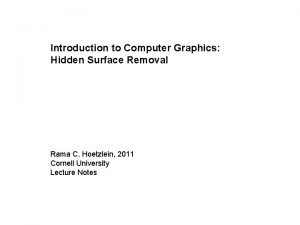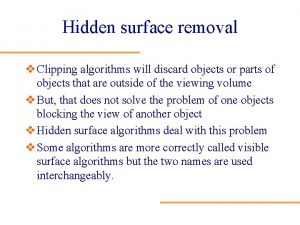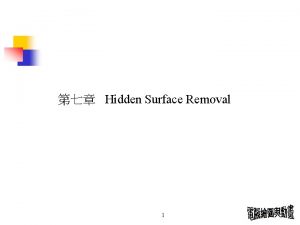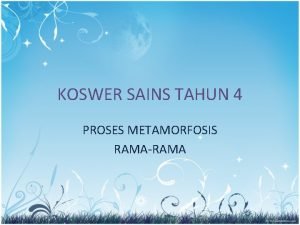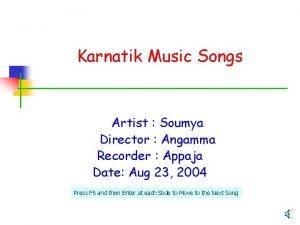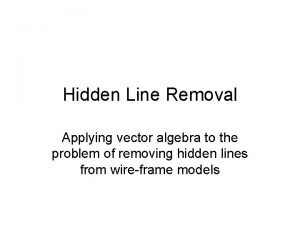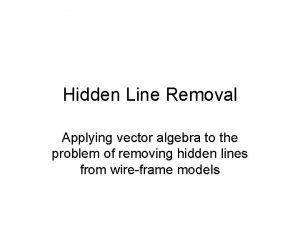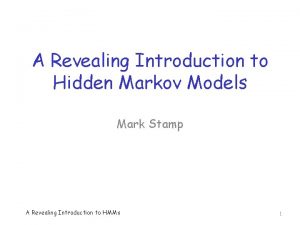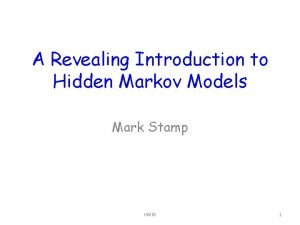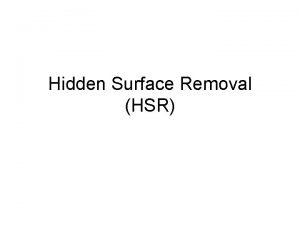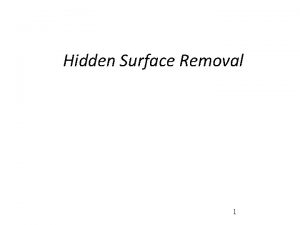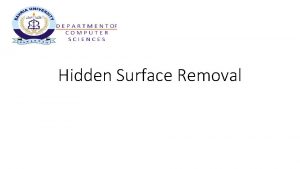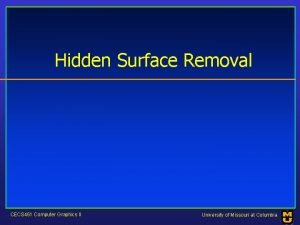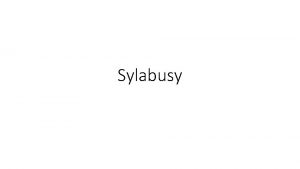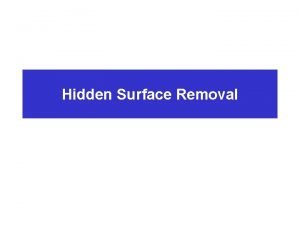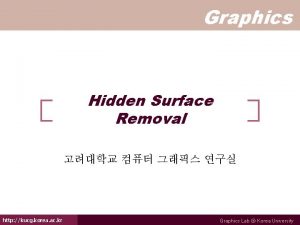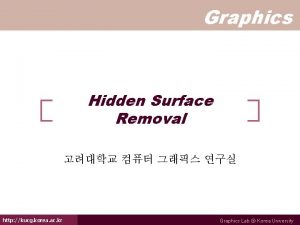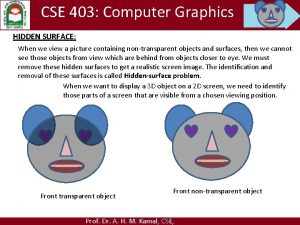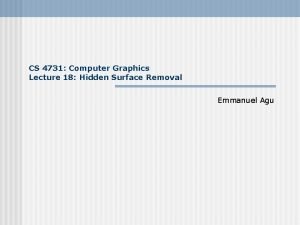Introduction to Computer Graphics Hidden Surface Removal Rama













- Slides: 13

Introduction to Computer Graphics: Hidden Surface Removal Rama C. Hoetzlein, 2011 Cornell University Lecture Notes

Hidden Surface Removal Depth Sorting Given a collection of polygons: What order do we draw them in?

Hidden Surface Removal • Object-space approach: use pairwise testing between polygons (objects) partially obscuring can draw independently • Worst case complexity O(n 2) for n polygons Angel: Interactive Computer Graphics 5 E © Addison-Wesley 2009 3


Painter’s Algorithm • Render polygons in back to front order so that polygons behind others are simply painted over B behind A as seen by viewer Angel: Interactive Computer Graphics 5 E © Addison-Wesley 2009 Fill B then A 5

Depth Sorting • Requires ordering of polygons first – O(n log n) calculation for ordering – Not every polygon is either in front or behind all other polygons • Order polygons and deal with easy cases first, harder later Polygons sorted by distance from COP Angel: Interactive Computer Graphics 5 E © Addison-Wesley 2009 6

Depth Sorting - Hard Cases cyclic overlap Easy cases – One polygon is completely behind the other. Just “paint” over it. penetration Angel: Interactive Computer Graphics 5 E © Addison-Wesley 2009 7


Scan-Line Algorithm • Can combine shading and hsr through scan line algorithm scan line i: no need for depth information, can only be in no or one polygon scan line j: need depth information only when in more than one polygon Angel: Interactive Computer Graphics 5 E © Addison-Wesley 2009 9


Z-Buffer Algorithm • As we render each polygon, compare the depth of each pixel to depth in z buffer • If less, place shade of pixel in color buffer and update z buffer Angel: Interactive Computer Graphics 5 E © Addison-Wesley 2009 11

Hidden Surfaces vs. Object Culling Hidden Surface Removal Goal: Render polygons in correct order. 1. Depth Sorting 2. Painter’s Algorithm 3. Scan Line Algorithm 4. Z-Buffer Object Culling 1. Bounding Boxes 2. Binary Space Trees Goal: Avoid rendering non-visible objects.

 Hidden surface removal in computer graphics
Hidden surface removal in computer graphics V clipping
V clipping Hidden surface removal
Hidden surface removal Telur rama rama berubah mengikut
Telur rama rama berubah mengikut Sri rama sri rama sri manoharama
Sri rama sri rama sri manoharama Hidden line removal
Hidden line removal Hidden line removal
Hidden line removal Computer graphics
Computer graphics Computer graphics chapter 1 ppt
Computer graphics chapter 1 ppt Surface representation in computer graphics
Surface representation in computer graphics Line function in computer graphics ppt
Line function in computer graphics ppt A revealing introduction to hidden markov models
A revealing introduction to hidden markov models A revealing introduction to hidden markov models
A revealing introduction to hidden markov models Formula of total surface area of triangular prism
Formula of total surface area of triangular prism
